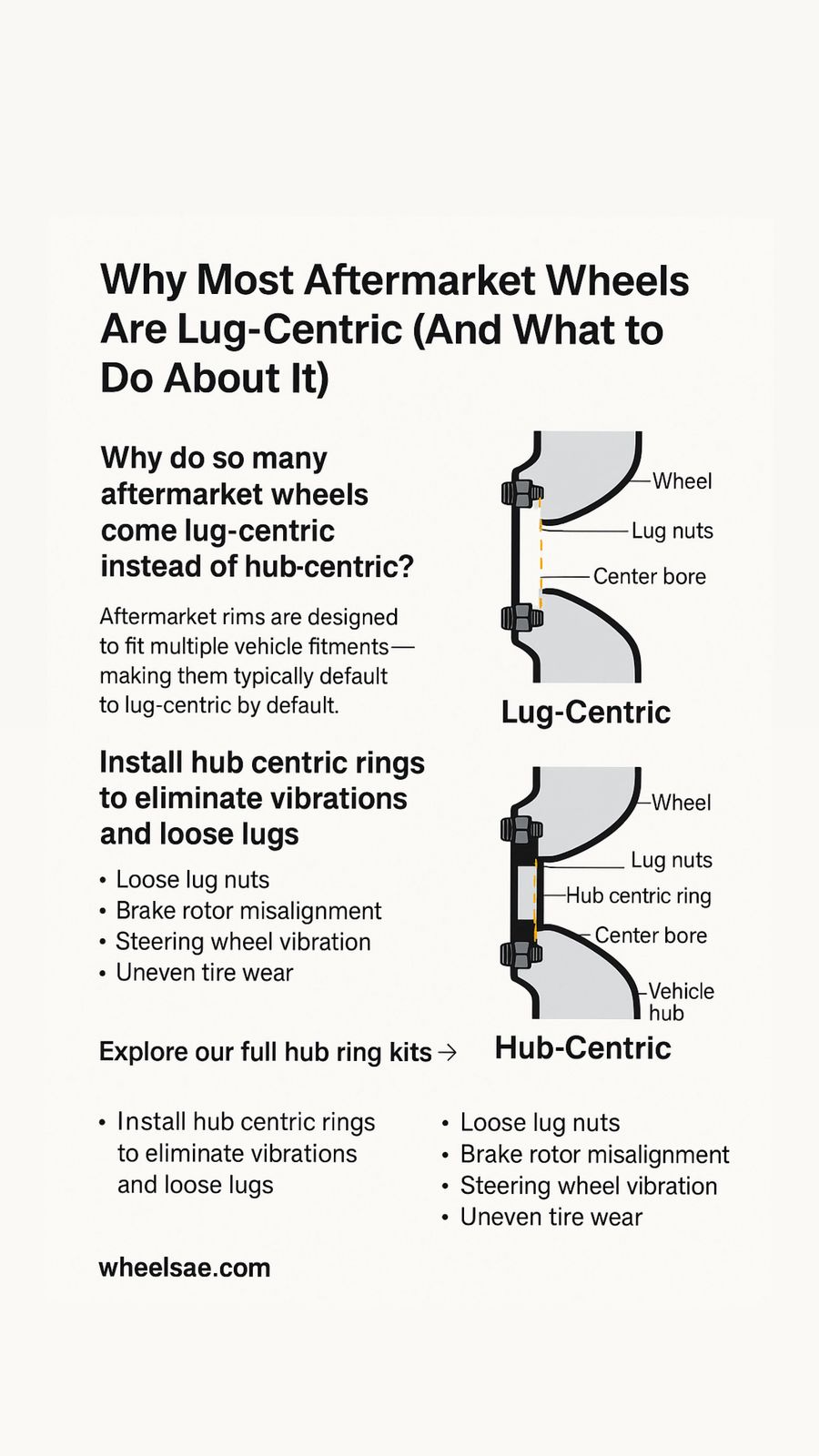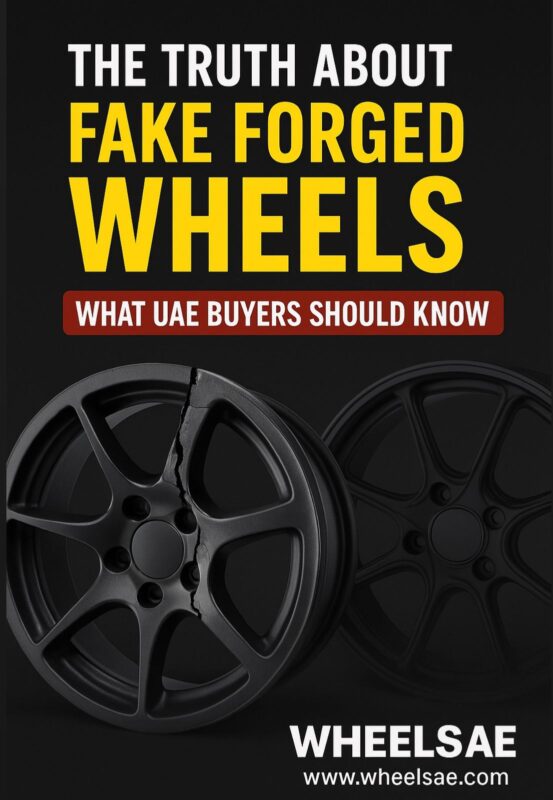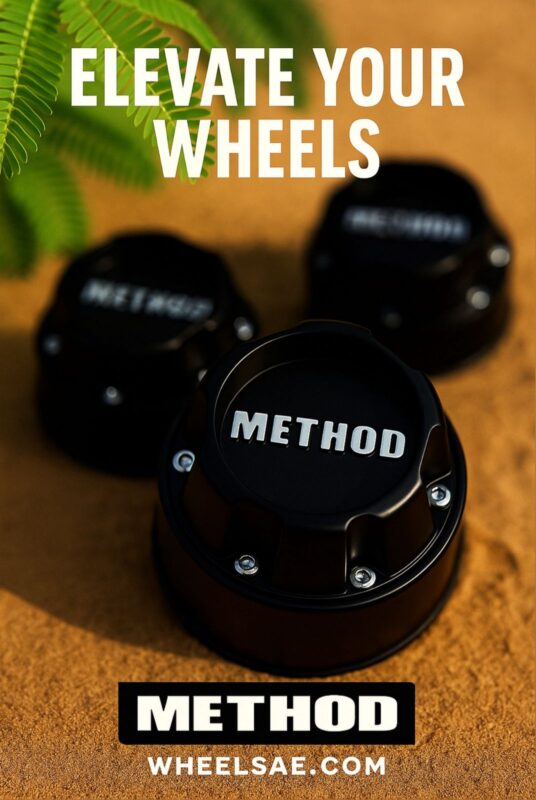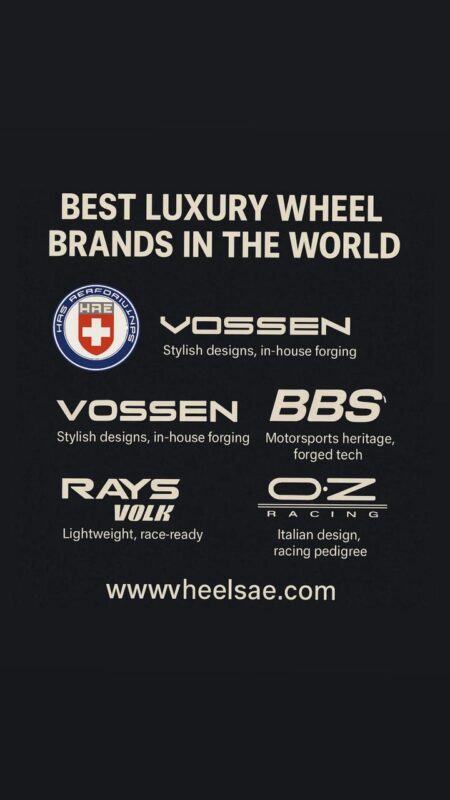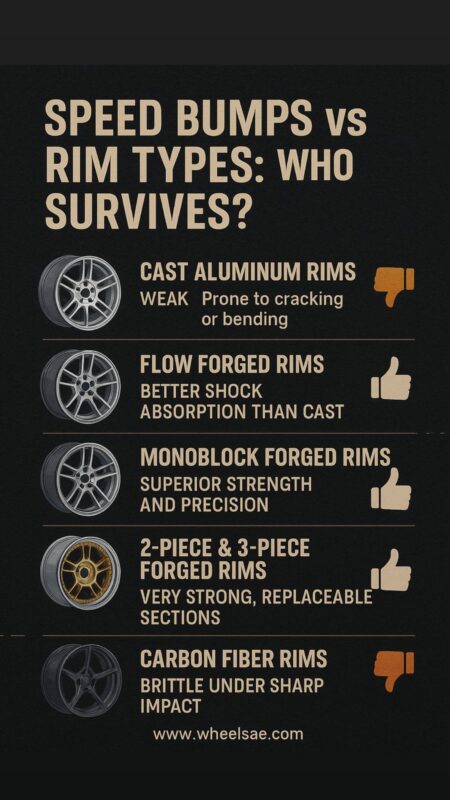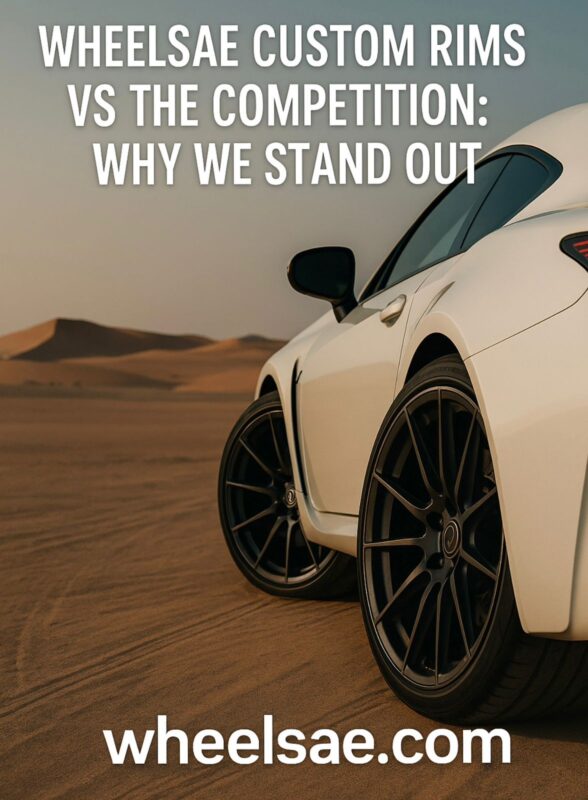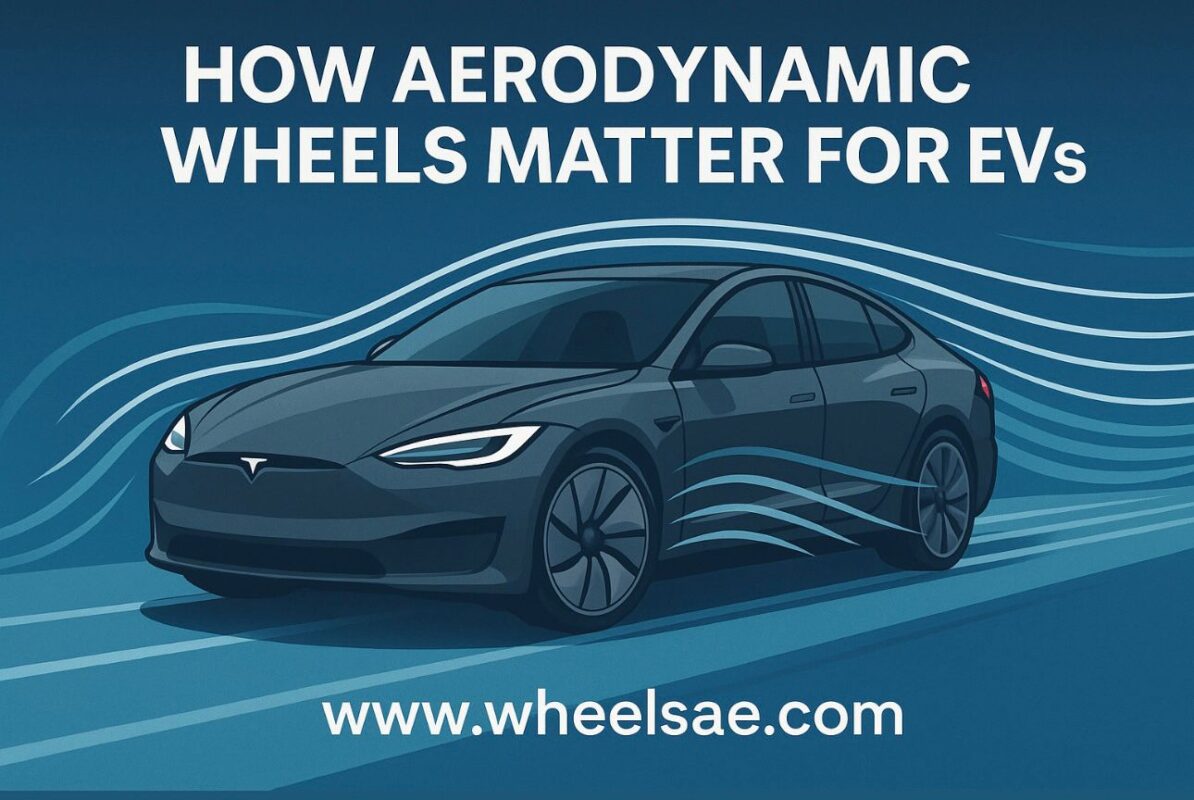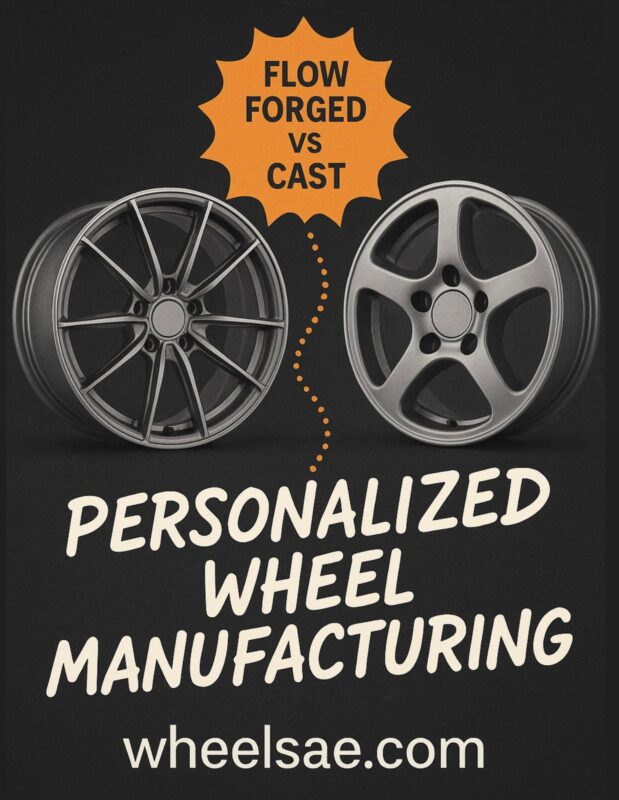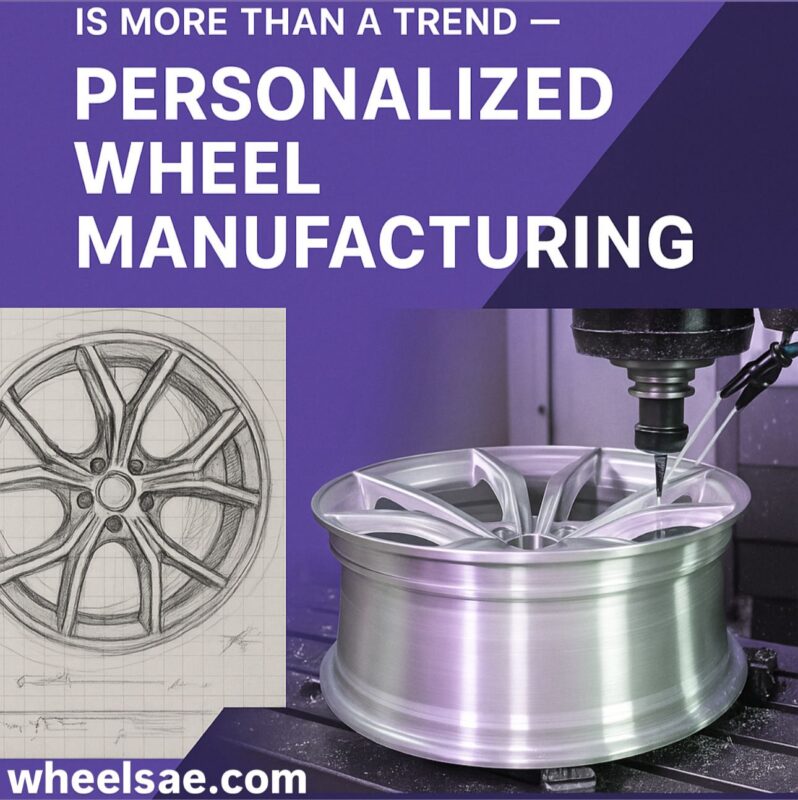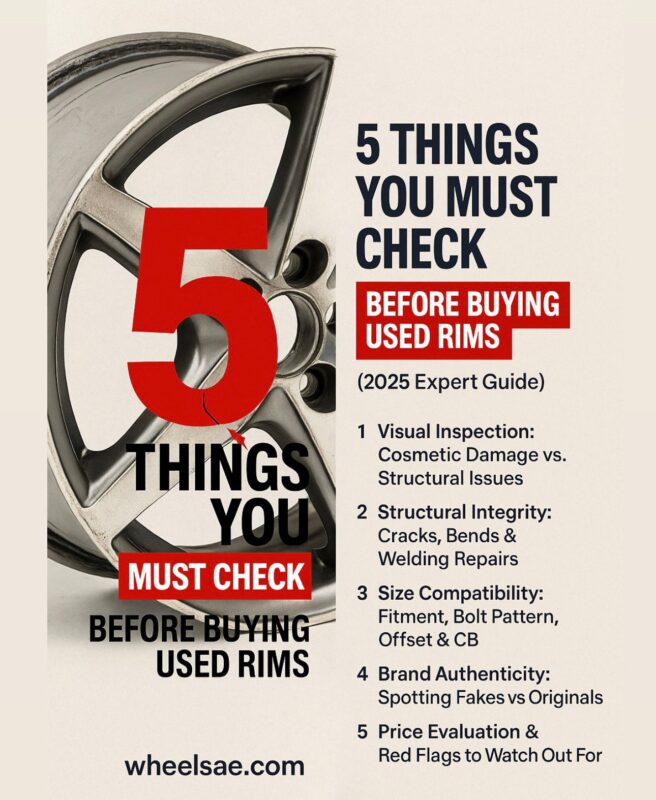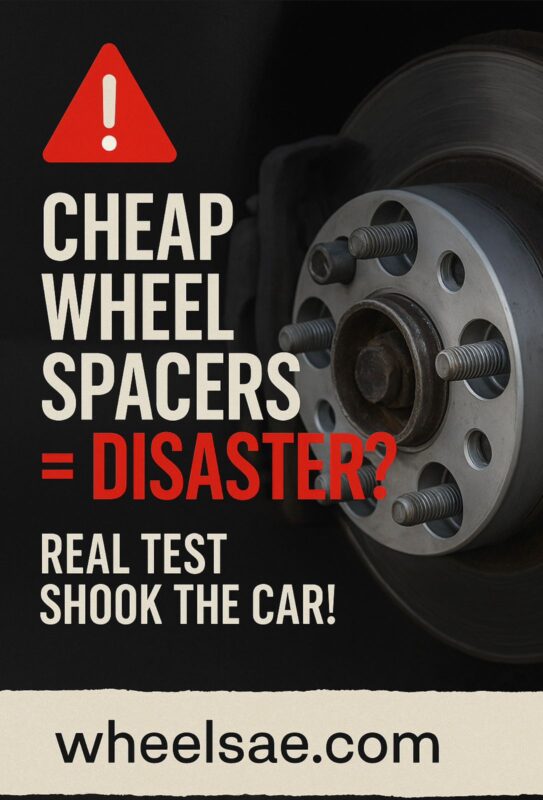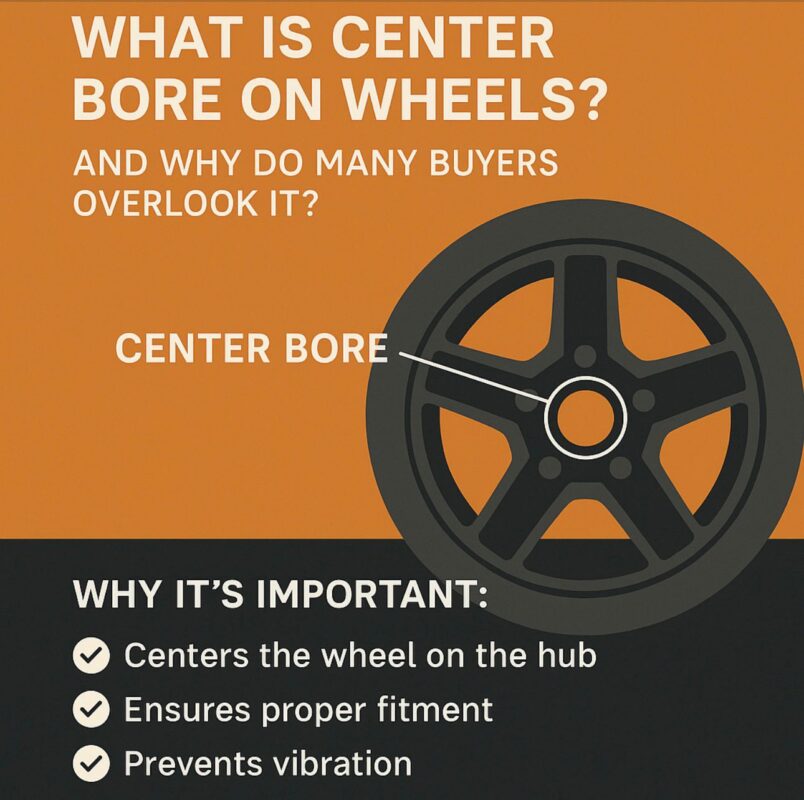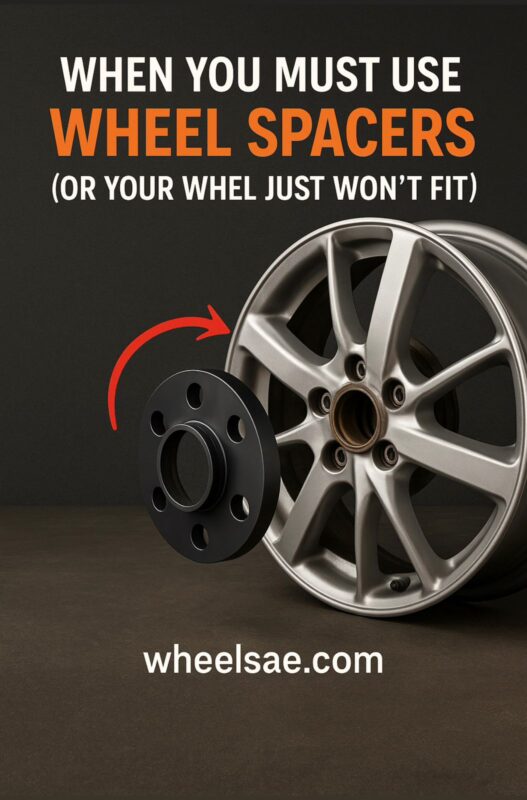Hub-Centric vs Lug-Centric Wheels
🛞 Introduction
When it comes to aftermarket wheels, one detail many car owners overlook is whether their setup is hub-centric or lug-centric. It sounds technical—but misunderstanding it can lead to vibrations, premature wear, and even dangerous failures on the road.
In this article, we’ll break down the difference, how to identify which one your vehicle has, and why getting it wrong can ruin both your ride and your rims.
⸻
🔍 What’s the Difference Between Hub-Centric and Lug-Centric?
✅ Hub-Centric Wheels
A hub-centric wheel aligns perfectly with the center hub of your vehicle. The hub bore of the wheel matches the diameter of the vehicle’s hub lip—meaning the weight of the car is supported by the hub, not the lug nuts.
• Example: Most OEM (original factory) wheels are hub-centric by design.
• Result: Perfect fitment, no vibration, and long-term reliability.
❌ Lug-Centric Wheels
On a lug-centric setup, the wheel doesn’t sit snugly on the hub. Instead, the wheel is centered only by the lug nuts. This is common in universal or aftermarket rims with larger center bores than your car’s hub.
• Example: Aftermarket wheels with a 73.1mm center bore fitted on a 66.1mm hub.
• Result: If not corrected with hub rings, this can lead to off-center wheels, causing wobble, vibration, and unsafe driving conditions.
⸻
🔧 How to Know If Your Setup Is Hub-Centric or Lug-Centric
Here’s how to tell in under 5 minutes:
1. Check the Center Bore Size
• Look up your vehicle’s OEM hub diameter.
• Then measure or check the specs of your aftermarket wheels.
• If the wheel’s bore is larger, it’s lug-centric unless corrected with a hub centric ring.
2. Look for Hub Rings
• A small plastic or aluminum ring between the hub and the wheel? That’s a hub ring—used to convert a lug-centric setup into a hub-centric one.
3. Feel the Fitment
• When mounting the wheel, does it rest snugly on the hub before the lugs are tightened? If yes, it’s hub-centric. If it feels “loose” until torqued down, it’s lug-centric.
⸻
⚠️ Why It’s a Big Deal (Seriously)
❗ Wheel Vibration at High Speeds
Lug-centric wheels are often slightly off-center, leading to vibrations above 80 km/h. No amount of tire balancing can fix that if the wheel isn’t centered on the hub.
❗ Stress on Lug Nuts
If the wheel weight is not supported by the hub, the lugs carry the entire load—causing:
• Loosened bolts over time
• Sheared studs
• Dangerous driving conditions
❗ Premature Wear & Safety Issues
Improper centering causes uneven tire wear, bearing stress, and dangerous failure over time—especially on performance or off-road vehicles.
⸻
🧩 The Fix: Hub Centric Rings
If you’re using aftermarket wheels, a set of high-quality hub centric rings can eliminate all lug-centric issues.
At Wheels AE, we offer:
• CNC-machined aluminum or durable plastic hub rings
• Sizes to fit common PCDs like 66.1, 67.1, 70.5, 73.1 and more
• Accurate fitment for brands like BMW, Toyota, Nissan, Tesla, and more
✅ Check our Hub Rings Collection →
⸻
📌 Key Takeaways
• Always check if your wheels are hub-centric or lug-centric before installation.
• If lug-centric, use proper hub rings to correct the issue.
• Improper centering causes vibration, hardware failure, and unsafe driving.
• OEM wheels are usually safe, but aftermarket setups need double-checking.
⸻
✅ • Wheel Spacers – Shop Now
• Alloy Wheels – Custom Rims
⸻
🛠️ Why Most Aftermarket Wheels Are Lug-Centric
One common issue car enthusiasts face when upgrading to aftermarket rims is discovering they’re lug-centric instead of hub-centric. Why does this happen so often?
The reason is simple: aftermarket wheels are designed to fit multiple vehicles, which means they often have a larger center bore than your factory hub. That’s why many of them are lug-centric by default, unless you take action.
The good news? There’s an easy solution—hub centric rings.
By installing the correct-size ring, you transform your setup into a hub-centric system, ensuring better load distribution and eliminating vibrations. For example, if your car has a 66.1mm hub and the wheel bore is 73.1mm, you’ll need a 73.1 → 66.1 ring to convert the fitment properly.
Many drivers ignore this detail, thinking lug-centric vs hub-centric is a minor technicality. But it’s not. Failing to convert your wheels to hub-centric can lead to:
• Loose lug nuts
• Brake rotor misalignment
• Steering wheel vibration
• Uneven tire wear
So whether you’re building a daily driver, a show car, or an off-road monster, always double-check the hub-centric vs lug-centric compatibility. It’s a small investment that can save you from costly repairs and dangerous situations on the road.

